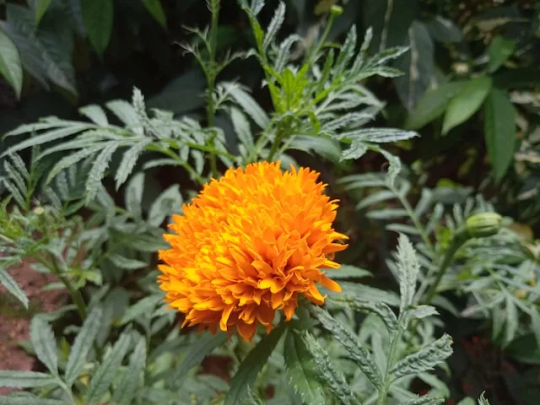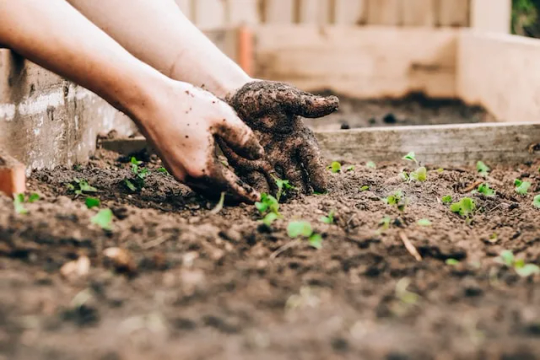#10EasyStepstoGrowMarigoldFlowersinYourHomein2023
Explore tagged Tumblr posts
Text
10 Easy Steps to Grow Marigold Flowers in Your Home in 2023

Marigold Flowers are a popular choice for home gardens due to their bright and colorful blooms, easy care requirements, and insecticidal properties. These plants belong to the genus Tagetes and are native to Mexico and Central America but are now widely cultivated around the world. Marigold Flowers are commonly used in religious ceremonies and festivals, such as Diwali and Durga Puja. They are also used as offerings to gods and goddesses and are believed to bring good luck and ward off evil spirits. In addition, marigold flowers are used to make garlands, which are worn as decorations or given as gifts.
What you are learning from this article for Grow Marigold Flowers
About Marigold flower Planting and growing marigold flowers at home What are some common mistakes to avoid when growing marigolds? What are some organic pest control methods I can use to treat pests on my marigolds? Marigolds are easy to grow and can be planted in pots or directly in the ground. They prefer well-draining soil and plenty of sunlight and can tolerate dry conditions once established. Marigolds also have natural insecticidal properties, which makes them an ideal choice for organic gardening. The roots of the plant produce a substance that repels harmful nematodes and other soil-borne pests, which can help to protect other plants in the garden.

#image_title Marigolds come in a range of colors, including yellow, orange, red, and maroon, and some varieties have double blooms. They are generally low-maintenance plants that require minimal care, with the exception of regular deadheading to promote continuous blooming. Overall, marigolds are a versatile and beautiful choice for home gardens, and their easy-care requirements and insecticidal properties make them an ideal choice for both beginner and experienced gardeners. With their bright and colorful blooms, marigolds can add a splash of color and beauty to any garden, while also providing cultural and religious significance.

#image_title
Planting and growing marigold flowers at home
Marigolds are a popular choice for home gardens due to their bright and colorful blooms, insect-repelling properties, and easy-care requirements. Here are 10 simple steps for planting and growing marigold flowers at home in 2023: - Choose a location: Marigolds prefer full sunlight, so choose a location in your garden that receives at least six hours of direct sunlight per day. - Prepare the soil: Marigolds prefer well-draining soil that is rich in organic matter. Amend your soil with compost or other organic matter to improve its drainage and nutrient content. - Plant seeds or seedlings: Marigolds can be grown from seeds or seedlings. If starting from seeds, sow them directly in the ground after the last frost date, or start them indoors 6-8 weeks before the last frost date. If using seedlings, transplant them into the garden after the last frost date. - Water regularly: Marigolds require regular watering to thrive, especially during hot and dry weather. Water deeply and regularly to keep the soil evenly moist. - Fertilize: Marigolds are light feeders and do not require heavy fertilization. Apply a balanced fertilizer once a month during the growing season to promote healthy growth and blooming. - Deadhead regularly: Pinch off spent blooms regularly to promote continuous blooming and prevent the plant from putting its energy into seed production. - Mulch: Mulch around the base of the marigold plants with organic matter, such as straw or shredded leaves. This will help to retain moisture in the soil and suppress weed growth. - Watch for pests: Marigolds are generally resistant to pests, but they can occasionally be affected by aphids, spider mites, or whiteflies. Monitor your plants regularly and treat any pest infestations promptly. - Prune: Prune back any leggy or overgrown stems to promote bushier growth and more blooms. - Enjoy the blooms: Marigolds will continue to bloom throughout the growing season, providing a splash of color and beauty to your garden. Cut blooms for indoor arrangements or leave them on the plants to attract beneficial insects and birds. By following these simple steps, you can enjoy the vibrant colors and insect-repelling properties of marigold flowers in your home garden in 2023. With their easy care requirements and cultural significance, marigolds are an ideal choice for both beginner and experienced gardeners alike.

#image_title While marigolds are generally easy to care for, there are still some common mistakes that gardeners should avoid when growing them. Here are a few to keep in mind - Overwatering: While marigolds need regular watering, they do not like to be overwatered. Overwatering can lead to root rot, which can kill the plant. Make sure to water deeply and infrequently, rather than frequently and shallowly. - Poor soil drainage: Marigolds prefer well-draining soil. If the soil is too compacted or heavy, it can lead to root rot or other problems. Make sure to amend the soil with compost or other organic matter to improve its drainage. - Planting too close together: Marigolds need space to grow and spread out. Planting them too close together can lead to overcrowding, which can inhibit their growth and blooming. - Neglecting to deadhead: Deadheading, or removing spent blooms, is important for promoting continuous blooming and preventing the plant from putting its energy into seed production. Neglecting to deadhead can lead to a decrease in blooming and overall plant health. - Over-fertilizing: Marigolds are light feeders and do not require heavy fertilization. Over-fertilizing can lead to leggy growth and fewer blooms. Apply a balanced fertilizer once a month during the growing season, or as directed on the package. - Not monitoring for pests: While marigolds are generally resistant to pests, they can occasionally be affected by aphids, spider mites, or whiteflies. Neglecting to monitor for pests can lead to an infestation that can harm the plant. If you notice any signs of pests, treat them promptly with an insecticidal soap or other organic pest control method. - Planting in the wrong location: Marigolds need full sunlight to thrive. Planting them in a shady location can lead to leggy growth and fewer blooms. Make sure to choose a location in your garden that receives at least six hours of direct sunlight per day. By avoiding these common mistakes, you can help to ensure that your marigold plants thrive and provide a beautiful and colorful addition to your home garden. With their insect-repelling properties and cultural significance, marigolds are a great choice for any gardener looking to add some color and beauty to their outdoor space.
There are several organic pest control methods that you can use to treat pests on your marigolds.
- Insecticidal soap: Insecticidal soap is a natural and effective way to control pests on marigolds. It works by suffocating the pests, so it is safe for use on most plants. To use, simply mix the soap with water according to the package directions and spray it on the affected plants. Be sure to follow the package instructions carefully. - Neem oil: Neem oil is another natural and effective way to control pests on marigolds. It works by disrupting the feeding and mating behavior of the pests, which makes it difficult for them to reproduce and spread. To use, mix the neem oil with water according to the package directions and spray it on the affected plants. - Companion planting: Companion planting is a technique that involves planting certain plants together to repel pests. Some plants, such as basil, chives, and garlic, are known to repel pests like aphids and whiteflies. Planting these plants near your marigolds can help to keep pests at bay. - Handpicking: Handpicking is a labor-intensive but effective way to control pests on your marigolds. Simply go through your plants regularly and pick off any pests that you see. Be sure to dispose of them properly, so they do not return to the garden. - Diatomaceous earth: Diatomaceous earth is a natural and safe powder made from the fossilized remains of diatoms, a type of algae. It works by dehydrating and killing pests, including aphids, mites, and slugs. To use, sprinkle a fine layer of diatomaceous earth around the base of your marigold plants and on the leaves. Be sure to reapply after rain or irrigation. By using these organic pest control methods, you can effectively treat pests on your marigolds without resorting to harmful chemicals. These methods are safe for the environment, as well as for beneficial insects like bees and butterflies. Be sure to monitor your plants regularly and treat any pest infestations promptly to keep your marigolds healthy and blooming.
See also,
Top 10 Gardening Flowers to Beautify Your Home Read the full article
#10EasyStepstoGrowMarigoldFlowersinYourHomein2023#EasyStepstoGrowMarigoldFlowers#flowers#GardeningFlowers#marigold#marigoldflowerplant#MarigoldFlowers#marigoldplant#marigolds
0 notes